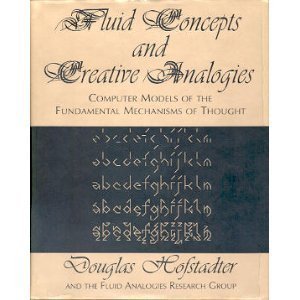What do you think?
Rate this book


"A remarkable book. At first I said 'too technical and specialized,' but hours later I found I couldn't stop reading.... A marvelous book, illuminating oddities of thought and raising them to profound insights into the nature of human creativity."--Donald A. Norman, Apple Fellow; Professor Emeritus, University of California, San Diego
528 pages, Hardcover
First published January 1, 1991
Suppose the letter-string abc were changed to abd; how would you change the letter-string ijk in “the same way”?This does not sound like much, but it is a very interesting and wide field, if you take a closer look at it. The general idea is also addressed by Melanie Mitchell, a co-author and developer of Copycat in this video of a lecture, which I highly recommend:
Suppose the letter-string abc were changed to abd; how would you change the letter-string xyz in “the same way”?This is rather similar to the problem above, but it obviously has some obstacle built into it. The concept “successorship” doesn’t work for the last letter of xyz anymore. Copycat (at least some of the times) offers wyz as an answer. This might look strange at first, but it’s actually a rather deep answer. The program has discovered the rising sequence of letters a-b-c, and the change to the successor in the last position. It then slipped these concepts and instead of going up from left to right and change the last letter to its successor it is now going down from right to left and changes the first letter to its predecessor. How is that for analogy making?

1 2 2 3 3 4 4 5 5
1 (2 2) (3 3) (4 4) (5 5)
(1 2) (2 3) (3 4) (4 5) (5 6?)
1 1 2 1 1 1 2 3 2 2 1 1 2 3 4 3 3 2 1
( 1 ) (1 2 1 1) (1 2 3 2 2 1) (1 2 3 4 3 3 2 1)
I change efg to wfg. Can you do the same thing to ghi?
I change abc to abd. Can you do the same thing to mrrjjj?
A collection of papers authored by Hofstadter and the members of his Fluid Analogies Research Group, this book presents the results of many years work in cognitive science research.
Also included are a couple papers pointedly criticizing some other approaches in the field, the main criticism being a failure to model human cognition in a realistic way.
Hofstadter is always worth reading and this collection is no exception to the rule.